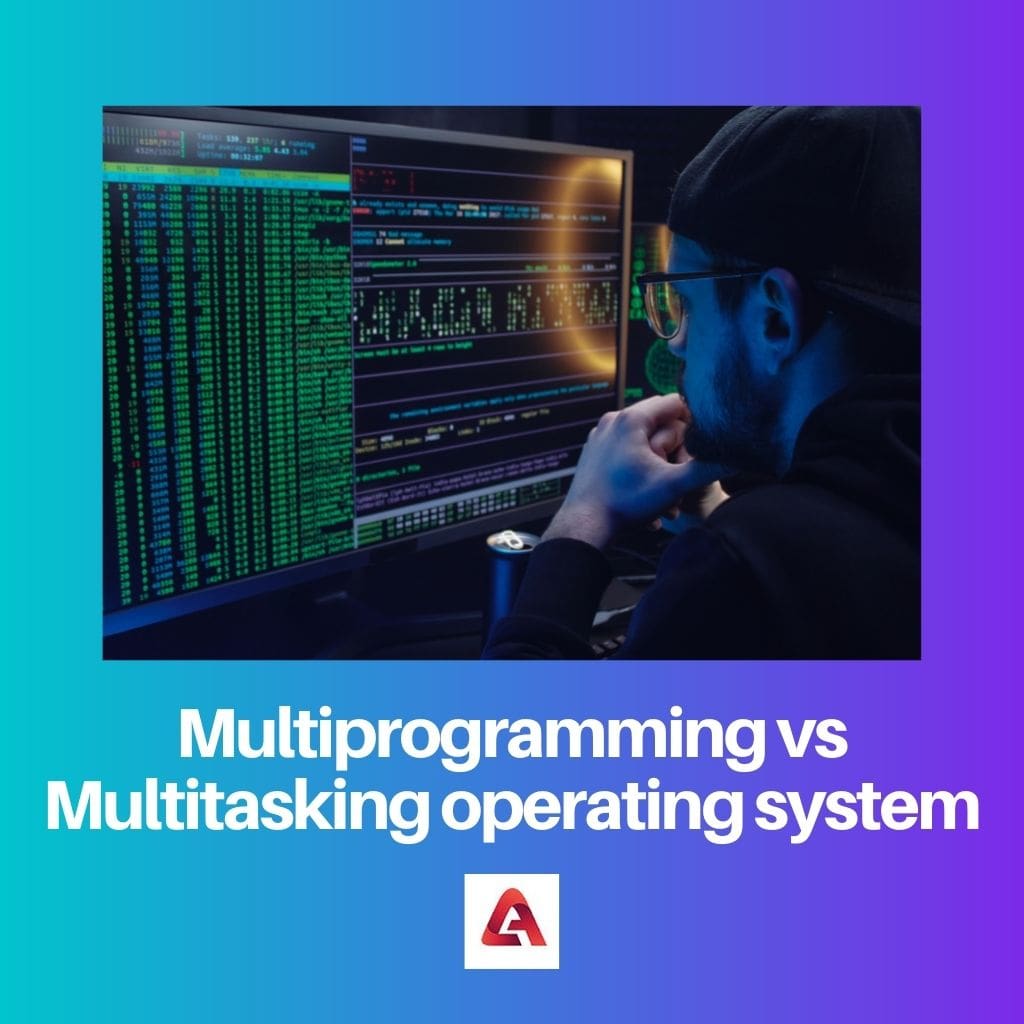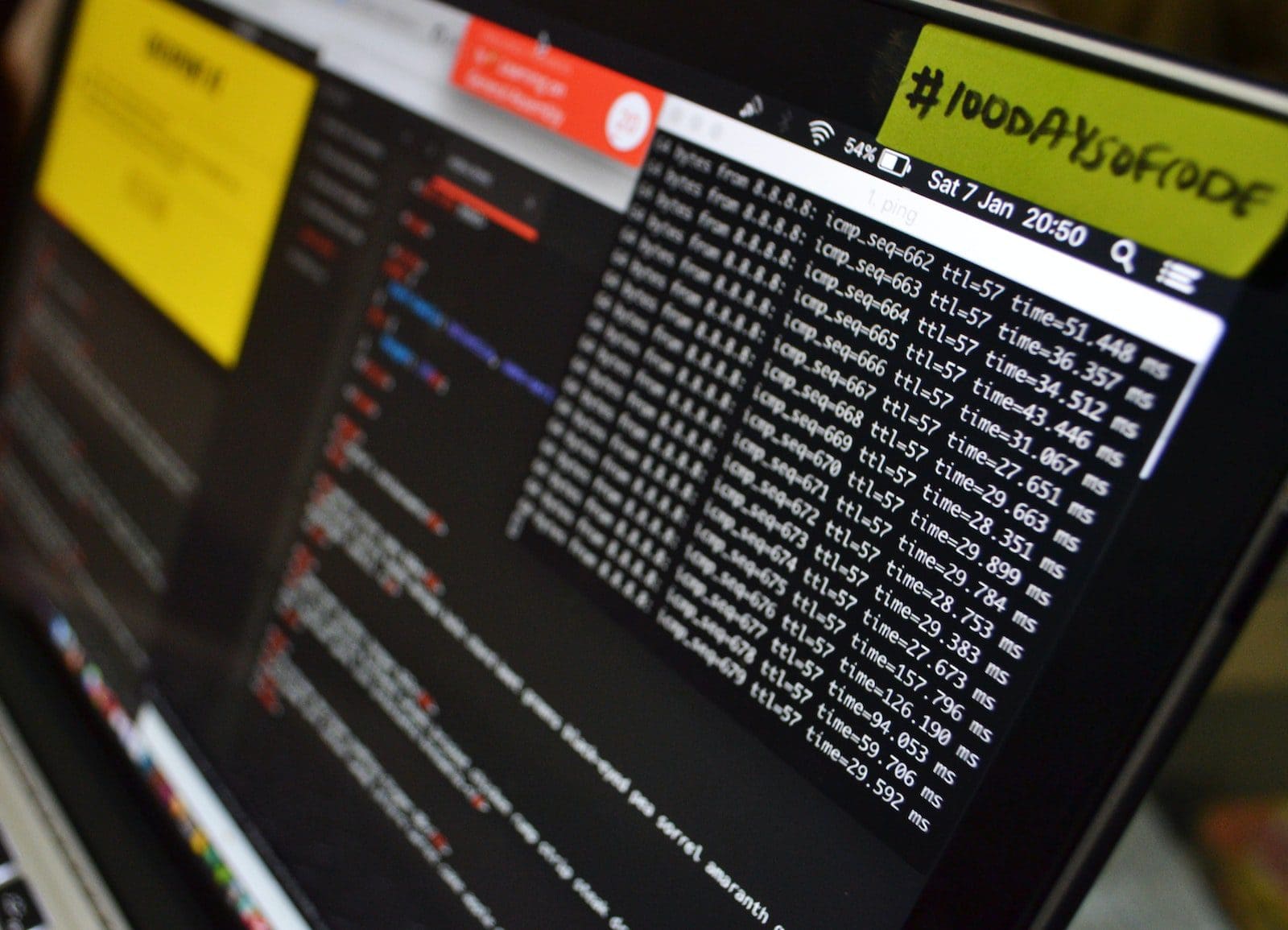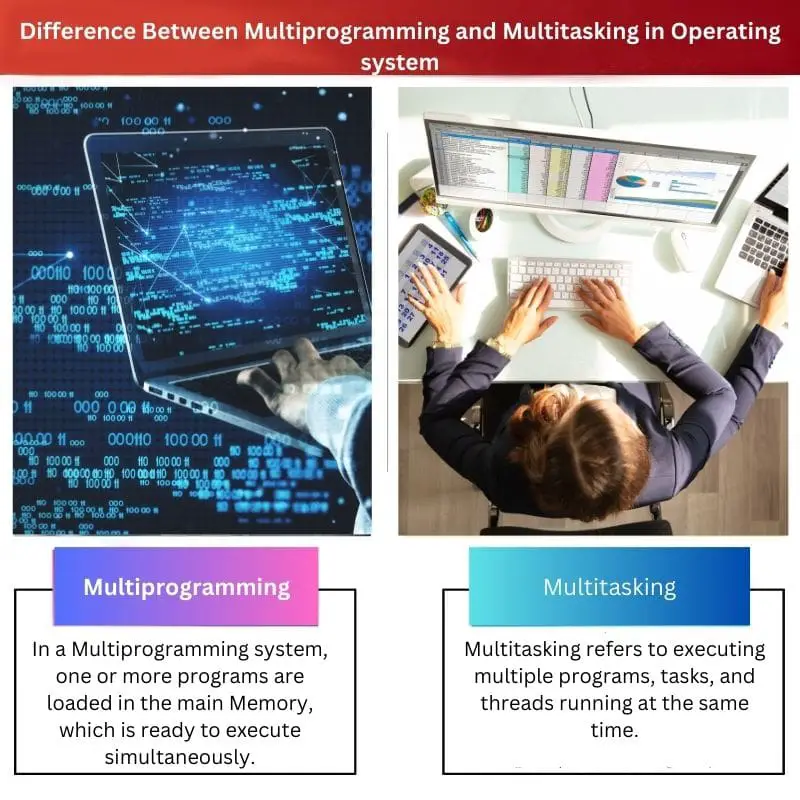The operating system is an important program that manages computer hardware and other software applications.
We can say it acts as a middleman. This is because the user cannot give commands directly to the CPU in machine language, nor can the CPU interact with the user directly.
Apart from the operating system’s basic tasks, such as controlling peripheral devices, showing output on the screen, and tracking data and files, the operating system also serves a higher purpose of multiprogramming and multitasking.
Key Takeaways
- Multiprogramming operating systems allow multiple programs to reside in memory simultaneously, improving resource utilization and reducing idle time.
- Multitasking operating systems enable a single user to work on multiple tasks or applications simultaneously by rapidly switching between them.
- Both multiprogramming and multitasking operating systems aim to improve efficiency and productivity, but they differ in focus, emphasizing resource utilization and multitasking focusing on user experience.
Multiprogramming vs Multitasking in Operating system
Multiprogramming operating system is a system where one or more programs are loaded into a main memory that will implement them at the same time to improve CPU utilization. Multitasking operating system is a system that executes different programs, threads, and tasks which are running simultaneously.

Comparison Table
| Parameter of comparison | Multiprogramming | Multitasking |
|---|---|---|
| Meaning | In a Multiprogramming system, one or more programs are loaded in the main Memory, which is ready to execute simultaneously. | Multitasking refers to executing multiple programs, tasks, and threads running at the same time. |
| Objective | The multiprogramming objective is to improve the utilization of the CPU. | The multitasking objective is to improve the timing of the response. |
| Time | Multiprogramming takes more time to execute any program to process | Multitasking takes less time to execute any task or program process. |
What is Multiprogramming?
Multiprogramming focuses on increasing the utilization of the CPU. It runs multiple processes at the same time on a single processor.
The CPU jumps to another job or program. In contrast, the program goes for IO operation, i.e. In Multiprogramming, the operating system keeps several jobs/programs in memory, so the CPU selects and executes a job.
When that job needs to wait for any IO operation, the CPU switches to another job and executes it.
Multiprogramming can be done on a slow-processing CPU. It requires less memory (RAM or ROM) to function. This whole idea of Multiprogramming is to keep the CPU busy as long as possible.
Advantages of Multiprogramming
- High CPU Utilization
- Shorter Response time
Disadvantage of Multiprogramming
- Scheduling implementation is not easy
- More management is required

What is Multitasking?
Multitasking means working on more than one task at a time means you are using your computer and listening to songs. Also, search for something on the internet using a browser and make a word file for your assignment.
Multitasking is quite similar to multiprogramming, but this CPU is allocated to a process for fixed timing, i.e. ‘Time quantum or time slice’. After that, the CPU ‘Context switch’ to another process.
The PC requires a large memory (RAM or ROM) for multitasking. Its main objective is to improve the timing of response from the CPU.
Multitasking is a very complicated system. It is based on a time slice concept which allocates a fixed time interval to each task to be executed.
Advantages of Multitasking
- Shorter response time
- Logical parallelism
Disadvantages of multitasking
- It can’t be implemented on a very slow-speed processor.
- Requires large storage memory to work.

Main Differences Between Multiprogramming and Multitasking in Operating Systems
- Multiprogramming mainly focuses on increasing CPU utilization. The programs are arranged so the CPU will never be idle; it will always have one program after another to execute. On the other hand, Multitasking aims to improve the response time from the CPU.
- In Multiprogramming, the processes are switched when the ongoing process stops, and the CPU is allocated to another process. In Multitasking, switching between tasks or processes occurs when the time quantum or time slice of the currently ongoing process gets over.

- https://dl.acm.org/doi/abs/10.1145/48012.48037
- https://ieeexplore.ieee.org/abstract/document/5009151/

It was fascinating to read about the differences and benefits of both multiprogramming and multitasking in operating systems. The article is a treasure trove of knowledge on the subject.
I couldn’t agree more. The in-depth coverage of both concepts and their objectives has certainly expanded my comprehension of operating systems.
The article provided a compelling discussion about multiprogramming and multitasking in operating systems. It’s a must-read for anyone delving into this area of computer science.
I found the article impressive. It succinctly covered the topic and allowed me to comprehend the divergent objectives of multiprogramming and multitasking.
Absolutely, the analysis of the main differences between multiprogramming and multitasking was quite enlightening. A commendable contribution to the body of knowledge in this field.
The extensive nature of the article effectively encapsulates the intricacies of multiprogramming and multitasking systems in operating systems. It is a commendable piece that adds value to the existing literature on the subject.
Absolutely, the article’s depth of analysis is truly commendable. It has efficiently explained the nuances between multiprogramming and multitasking.
I found the article quite enriching, particularly in the way it presented the core differences between multiprogramming and multitasking. A substantial contribution to the field.
This article greatly articulated the relevance of the operating system for both resource utilization and response time on the CPU. It undoubtedly adds to the wealth of knowledge in the field of computer science.
Absolutely! The detailed examination of multiprogramming and multitasking systems is quite insightful. It has enhanced my understanding of these concepts.
I found the content very informative and engaging. The explanation of the differences between multiprogramming and multitasking is clear and well-presented.
The article gives a comprehensive comparison between multiprogramming and multitasking, which is beneficial to widen the knowledge base in this domain.
I agree with you, the comparison was detailed and provides a deep insight into the two concepts. It’s a valuable resource for anyone interested in understanding the operating system.
The article serves as a rich resource for exploring the complexities of multiprogramming and multitasking, offering a thorough explanation of the fundamental differences and advantages of both systems in operating environments.
Indeed, the article has provided a significant understanding of the concepts. It has been an enlightening read.
A comprehensive elucidation on multiprogramming and multitasking. The details provided are vital in shedding light on the complexities of operating systems, making it a pertinent read for professionals and enthusiasts alike.
The delineation of the concepts is indeed illuminating. The article has effectively addressed the intricate details of multiprogramming and multitasking systems.
I couldn’t agree more. The content is a significant addition to the understanding of the operating system’s functionality, particularly in resource utilization and response time optimization.
This article meticulously presented the advantages and disadvantages of both multiprogramming and multitasking. It is a valuable resource for those seeking to develop a deeper understanding of these concepts.
Certainly, the article’s thorough exploration of the advantages and disadvantages has certainly enriched my knowledge. An excellent piece of writing.
The article has undeniably contributed to a deeper understanding of multiprogramming and multitasking, providing a detailed comparison of their objectives and functions in operating systems.
Absolutely, the article’s depth of coverage is truly commendable. It has added substantial knowledge to the understanding of the operating system.
The article’s detailed comparison between multiprogramming and multitasking has unveiled the complexities of these systems, serving as an enriching resource for understanding operating environments.